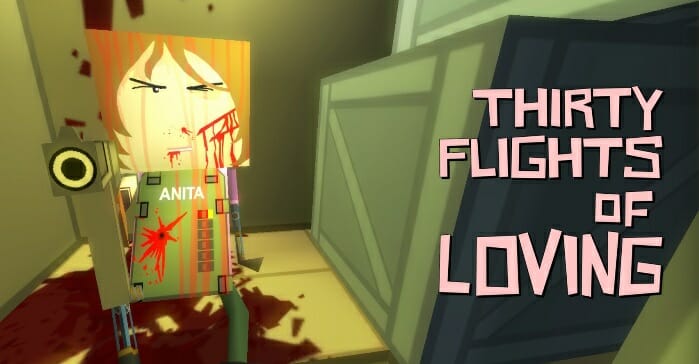Thirty Flights of Loving (PC)

“Remembrance of things past is not necessarily the remembrance of things as they were.” – Marcel Proust
It’s mostly good timing that I’m playing Assassin’s Creed 2 at the same time I’m reviewing Thirty Flights of Loving. Both deal with memory, but in very different ways. Assassin’s Creed 2 focuses on reliving the “genetic memories” of an ancestor of the modern day protagonist. Ubisoft takes that to mean guiding the owner of a questionable Italian accent through a recreation of 15th century Italy, with an anal attention to detail that brings to mind your father tinkering in the basement with his model town and trains. It is a conceit, of course, but a telling one. Like most AAA games it is an act of making the unreal real.
Thirty Flights of Loving also takes place in the realm of memory. Here, there isn’t exacting, anal detail: memory is imperfect, subjective, messy, just like the real thing. It’s hard to even say what it’s about. A heist? Yes, kinda, maybe. But Thirty Flights of Loving is less interested in the caper (it doesn’t even bother to show it) and instead interested in the relationships between its trio of criminals.
A broader question first: Why is objectivity such a big part of games? Part of it is the medium: a game is a construction of restrictions, whether it be rules or geography. Winning a game, the way most people understand it, should be a clear cut thing—how many complaints about gymnastics not even being a sport did you hear during the Olympics? Or, to frame the discussion in familiar territory, how many times have people dismissed the exploratory Dear Esther as a non-game? The goal in first person shooters is usually to survive and reach the end. There is nothing to endure in Thirty Flights of Loving, no enemies to impede “winning.” What I’m saying is satisfaction in Thirty Flights of Loving doesn’t come from the barrel of a gun. It’s a first person shooter without the shooting. What does that leave us with?
Designer Brendon Chung never offers any exposition, no character speaks, and the only backstory is a brief slideshow of your friends’ hobbies. Thirty Flights of Loving is a sequel to Chung’s Gravity Bone, but playing it isn’t necessary to understand Thirty Flights. The world is alien, an alternate version of the 1930s, a police state with spy balloons and airport lounges where men smoke too many cigarettes. Everything is simultaneously recognizable, but slightly off. The protagonist never tells you how they feel—they don’t say anything at all—but we’re instead shown, through their eyes, how certain moments feel. First person shooters emphasize putting you into somebody else’s skin, but you’re not really experiencing the sights and smells and reality of Gordon Freeman when you’re playing Half-Life. Your reactions, as a player watching and playing the game, are the important part. You are never really in their perspective, experiencing the world imperfectly. The games that do play with perspective (like Far Cry 2’s malaria vision) use it as a tic to help or hurt the shooting instead of a sincere effort to capture how different people view the world differently. We are still just playing as a gun-mounted camera on legs.
So how wonderful does it feel to see Chung create a moment that lets us see, really, truly, through the eyes of the hero? The protagonist remembers the night they drank too much at a wedding, bottles accumulating at the table in a series of jump cuts, all building to a climax: a woman, face flushed, sitting across from you at the table while everybody on the dance floor floats around each other. What an expression of falling in love. To show those details objectively, in real time, is possible, but Chung crafts a metaphor instead.